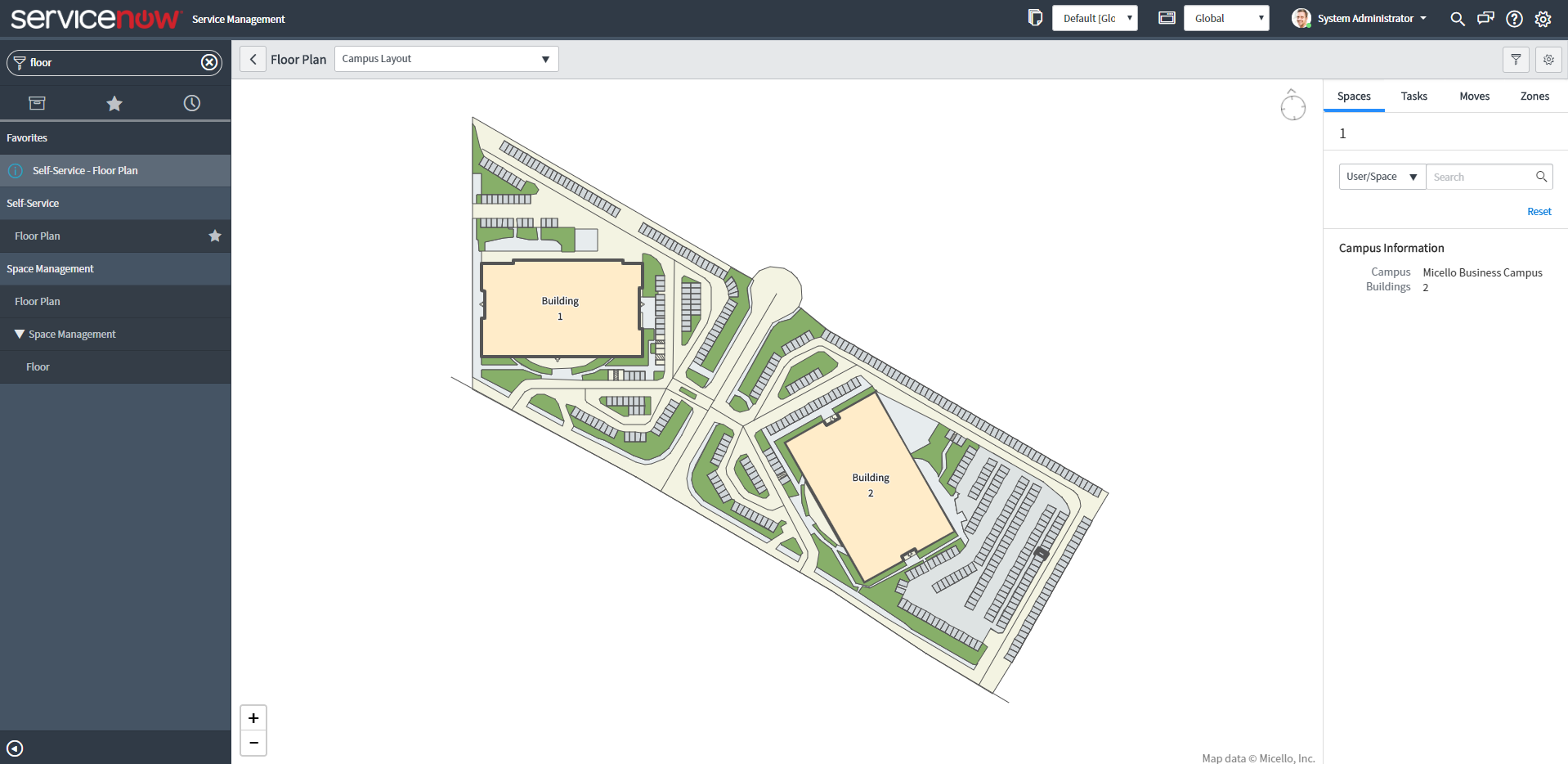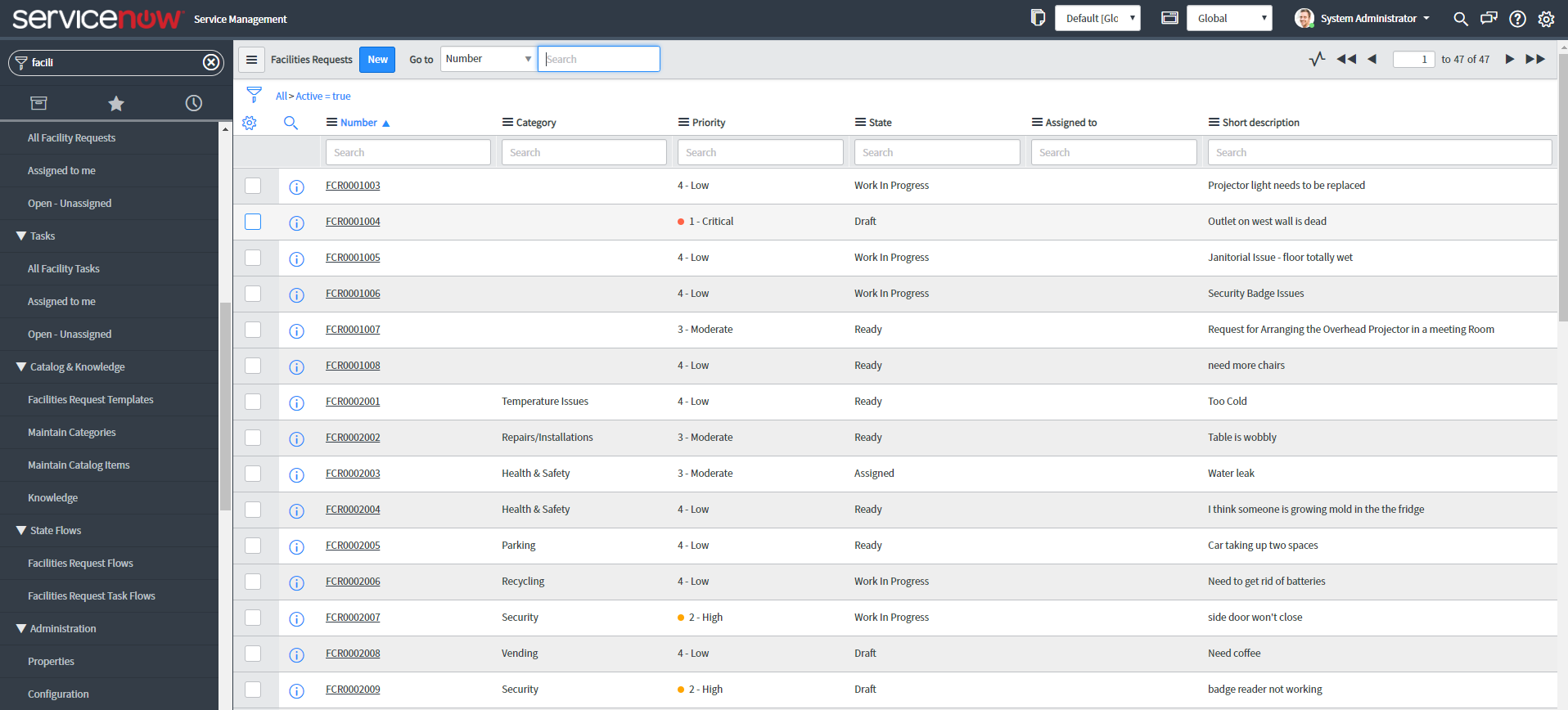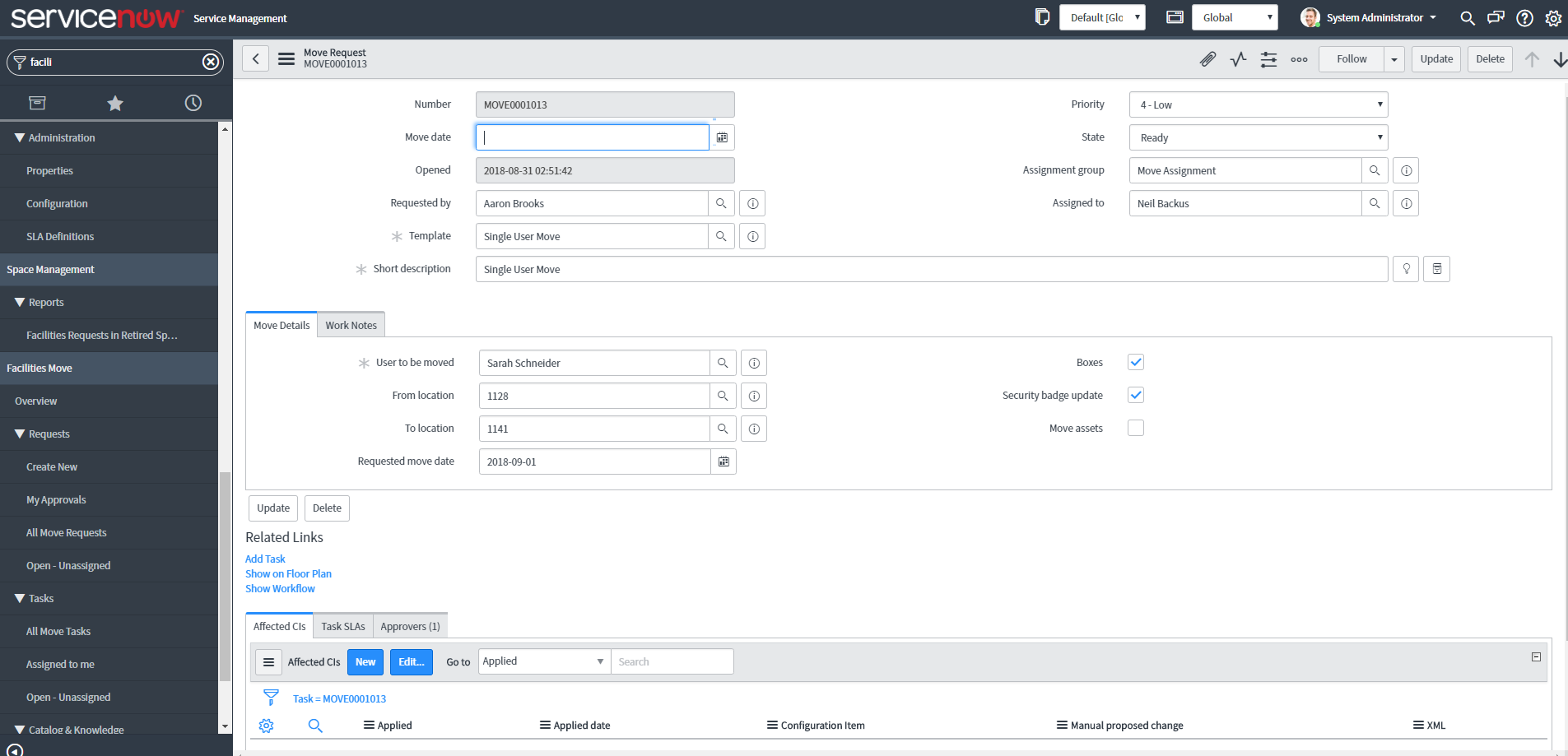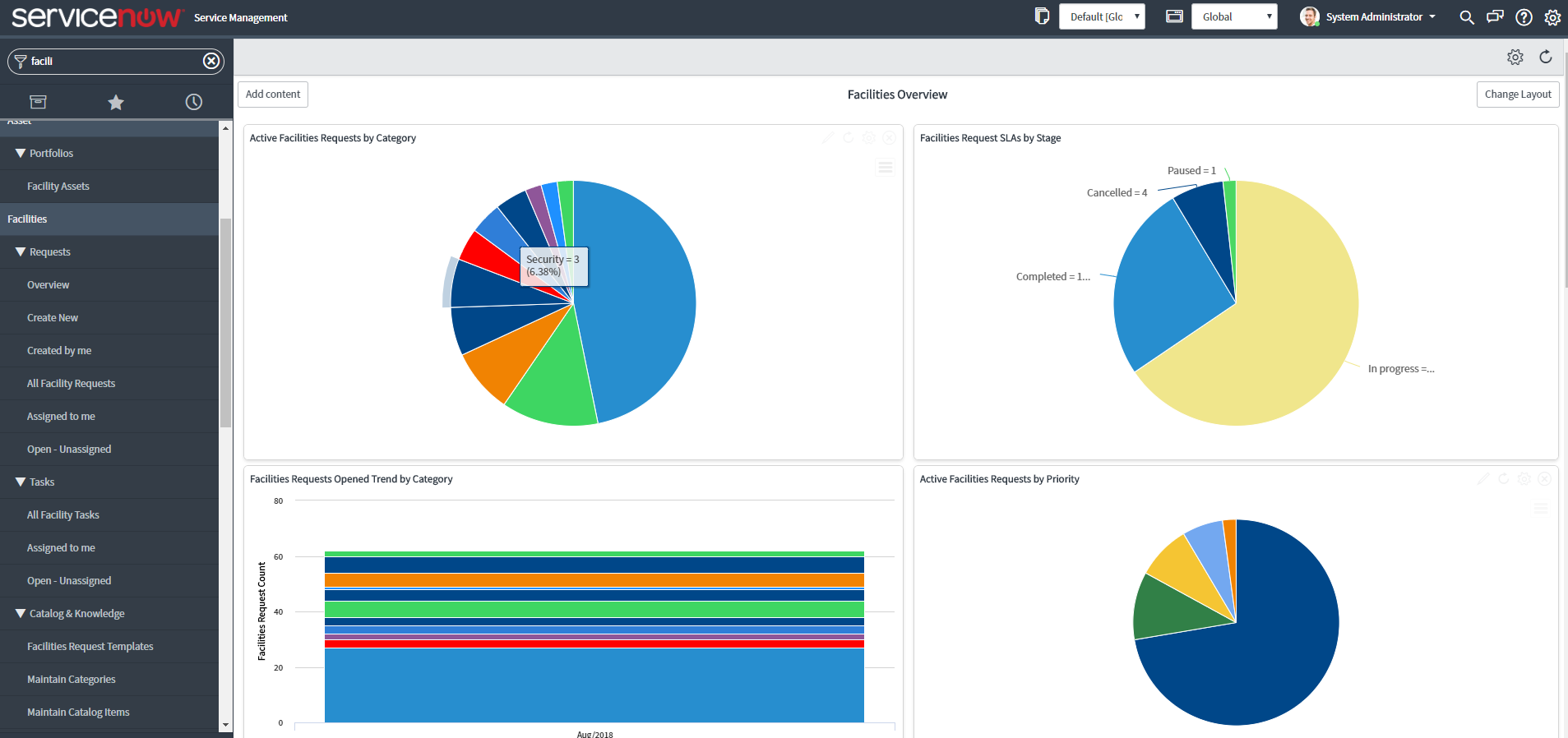Often facility management involves using many tools to maintain various facilities and resources. Here, user requests are usually managed through emails and telephone communications. These methods lack transparency and accountability in the overall facility service process and management. Examine how ServiceNow facility management with a unified approach, automates the overall facility service management process.
Understanding ServiceNow Facility Management
ServiceNow facility management is a dynamic facility service management solution, that lets users request changes in operation and maintenance of their facilities. The facility staff, through admin dashboards, track these requests and make the necessary changes if there are multiple domains including building facilities, procurement, marketing, Human Resource, finance, sales, operations and many more. Prior to ServiceNow facility management, facility requests and space planning requests are usually submitted and addressed via email and phone, with little accountability or transparency into the overall work.
ServiceNow facility management solution enables users and admins with a self-service portal to access facilities information and services on either desktop and mobile devices 24/7. Chatbotsor voice assistants integration with ServiceNow platform enables facility teams to resolve issues any day or night and at faster resolution speeds in a more human way.
The ServiceNow facility management tool helps employees find the available resources to solve a problem. As this tool takes care of critical and time-consuming needs, employees can concentrate on core business enhancements during this period. ServiceNow facility management is a unified platform where all facility management needs are addressed without having to manage multiple tools.
ServiceNow Facility Management Roles
Facilities Administrator: Creates and modifies all facilities, buildings, floors, rooms, and floor plans. They can validate and dispatch requests.
Facilities Staff: Performs and tracks the facility requests and makes necessary changes.
Facilities Dispatcher: Schedules and assigns tasks to facility staff.
Features of the Facility Management Application
- Facilities catalog
- Interactive facility maps
- Facilities management
- Facilities move management
- Space management
- Reporting engine
- Customer dashboards
Benefits of the Application
The ServiceNow Facilities Management application offers the following benefits:
- It is an attractive tool that enables businesses to visualize the overall assessment of cost predictions with intelligent reports. Resource optimization is achieved with the help of auto assignment.
- It indicates the accurate location of the configuration item or the user. The workflows are well organized with the elimination of human miscalculations.
In-depth reporting engine generates accurate reports which can trigger proactive and preventive maintenance actions. - Users can have access to the application to check the status of their requests, history, status updates, etc.. Thereby resulting in increased user satisfaction.
Facilities Catalog
Users can use the facilities catalog to submit their requests.

Figure: Facility Management Catalog
Interactive Facilities Maps
The interactive facility maps includes the workbench and floor plan, which provides a campus-level hierarchy. The facilities floor plan enables users to view the floor plan and raise requests for their teams, new joiners, and assets.

Facilities Management Process
The facility administrator creates the campus and configures the application with workflow, agent assignment, etc. Employees make facilities and move requests that are tracked to specific locations anywhere on the campus.
The Facilities Service Management process is as follows:
- A ServiceNow administrator activates and configures the Facilities Service Management application according to the needs and requirements of your organization.
- The facility administrator creates the campus and configures the spaces and assets contained within. Users submit facilities requests.
- Facilities staff qualifies facilities requests. Which is the process of checking the information in the request is complete, so facilities tasks can be assigned.
- Administrators organize requests into tasks and dispatch those tasks.
- Facility staff members perform the tasks necessary to fulfill the request.
- The assigned facility staff members close their tasks, allowing the request to be closed.

Figure: Admin View of Facility Management Requests
Facilities Move Management
Employees and managers can request single user moves. Members of the facility staff can use the enterprise move tool to plan and execute large move scenarios involving multiple people, assets/CIs, and departments.
Employees can request a single user moves via the service catalog.Facility teams use enterprise move to plan and execute move scenarios in support of large or complex employee move requests.

Figure: Facilities Move Management
Space Management
Space Management is an element of the facility management application. It is used with interactive facility maps to set up and optimize space utilization.
GeoJSON map files: The floor plan visualization feature uses files in the GeoJSON format, an open standard for representing geographical features.
Reporting
Evaluate facility resource utilization and types of service requests with simple custom-built reports and dashboards.

Figure: ServiceNow Facility Management Custom Built Reports and Dashboards
If you are willing to learn more about ServiceNow facility management, feel free to get in touch with our ServiceNow facility management expert for a free consultation.
 About the Author
About the Author
Srilaxmi Dadigala works as a Senior ServiceNow Developer at V-Soft Consulting. She holds 10 years of experience in the software industry as a developer. She is a certified ServiceNow Admin and Implementation Specialist. In ServiceNow, her expertise is into service portal and ITSM. Apart from being a ServiceNow developer, she is highly skilled in PHP programming (backend and frontend), Angular JS, jQuery, MySQL, and SQL.
















